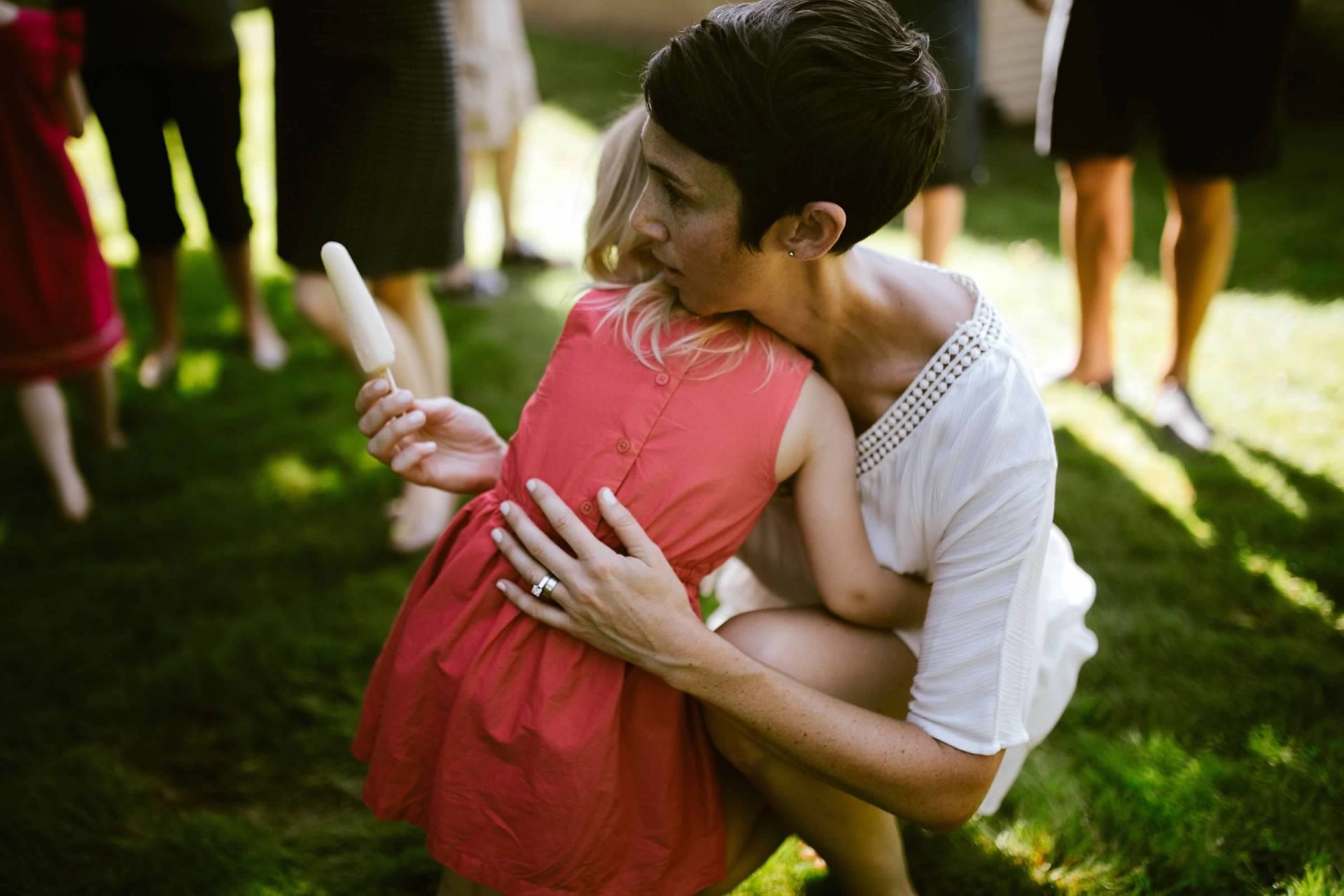
Connection and Compassion Are Key
I’ve said it a lot; there is no one-size-fits-all solution to sleep, but this applies to parenting in general as well. Many parents will read about certain techniques, and even follow specific scripts with older children, but if they don’t work, parents feel like they have failed or there is something wrong with their kid. They try a technique that their friend used, or read a book, or hear about something that is really popular. What they aren’t considering is that it will work for some kids, and it won’t work for others. Or maybe it will work for a little while, until your child catches on, and then you need to change your approach again.
No matter what age, you need to tune in to who your unique child is.
Connection means different things to everyone. I’m not a ‘hug it out’ type of person when I’m upset. I need space. My daughter needs lots of hugs and lots of attention when she is sad. When she is upset, she needs space and then she needs to talk. My husband needs peace and quiet, time to think. Your child is a unique individual with different needs, desires, and fears than you, your partner, and your other children. Just as we wouldn’t expect one technique to work for all adults, we can’t expect that when dealing with children.
Sometimes, to connect with your child, you may need separation. Many parents don’t understand this idea. They think if they are not hugging or physically touching, or at least near their child when they are upset, they are abandoning them. But when a child is more upset, more frustrated, and the situation escalates when you are near them, separation may be what they need. How this is executed will make all the difference. The words you use, your tone of voice, and your body language all matter. This is how you connect.
“I love you. I am going to step outside the room and wait here.”
“I am also feeling frustrated so I am going to take some deep breaths in the hall until I calm down too.”
Obviously, what you say and how you separate will vary depending on the age of your child and their temperament. Connection and compassion are key. You are here to help them, not punish them. When they are acting out, throwing a tantrum, or won’t go to sleep, it is never helpful to make them feel bad about it. For most little ones, they are not doing this intentionally. They need your help to get through this sad or scary or frustrating moment. They need your help in dealing with these completely normal emotions. Notice I said the are normal. We can’t expect our kids to never feel anything other than happiness. This is unrealistic and extremely unfair. They are going to get angry, sad, frustrated, scared, and nervous. How will you help them cope with these feelings? Instead of ignoring them or disregarding them, allow your child to feel the emotion and then deal with it in a healthy manner.
Sometimes your child will have these emotions toward you. They will get angry with you about something, and that’s okay. You are the parent, and they are the child. Your role is not to make them happy all the time or be their best friend, Your role is to create a safe and loving environment in which they thrive and feel supported. And sometimes that means allowing them to feel all their emotions. We also shouldn’t label emotions as “good” or “bad”. You don’t want your child to feel guilty because they are experiencing sadness or anger. These are normal emotions. You want to teach your child how to acknowledge that emotion, and deal with it in a healthy way. Ignoring it is not helpful. Discrediting it is not helpful. Shaming it is not helpful.
Try telling yourself this:
I have a really good kid who just happens to be struggling in this moment. I am their helper, not their punisher. They need my support, not my anger or frustration. Acting in anger causes stress in them which makes them act out more. It creates guilt and shame.
When I relate this idea specifically to sleep, this is why an in-person consult, with one-on-one support, and a custom sleep plan are so important. When one technique doesn’t work, you have an expert to guide you through other options. It’s also important to note that some babies and children need space sometimes. Stepping outside the room when things get hard is often good for both of you. Children sense anxiety and stress in parents. It changes how we act and talk which can change the outcome of the entire situation.
When we model this behavior to our children, we are showing them how to deal with strong emotions in a healthy way. It’s great for our children to know that we also have bad days. We also get frustrated, angry, or scared. We can help them figure out how to handle these big emotions.
They are always watching. They are always listening. What will they learn from you?
Alyssa Veneklase is a Certified Infant & Child Sleep Consultant, Newborn Care Specialist, and Certified Elite Postpartum & Infant Care Doula. She also teaches a Newborn Survival Class, Becoming a Mother series, and Tired as a Mother.


